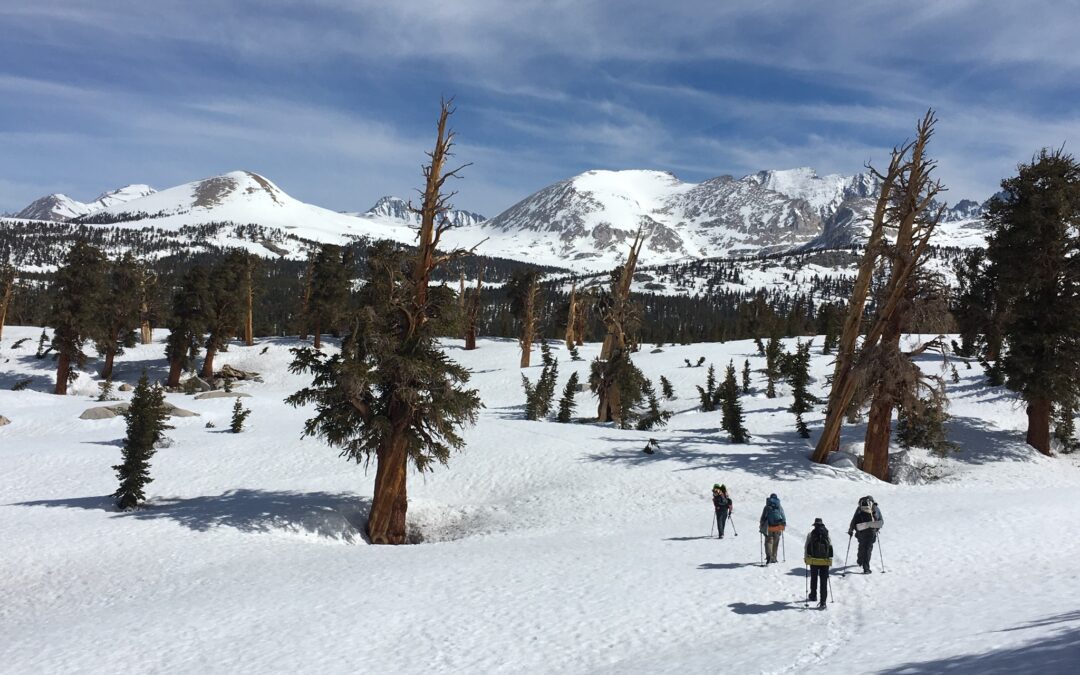A good friend of mine asked me this morning, what do I recommend aspiring thru-hikers do to avoid the dangers of snow-hiking? Recognizing that snow can fall on the trail in the Sierra every month of the year, the answer came down to one of Timing Strategy, as you’ll read, below:
I started the PCT on March 14 and the CDT on March 1st with the objective of going as slow as possible and still reaching Canada before the powder snows of winter returned. In the story I just wrote on my FB page, I encountered nice, consolidated snow to walk on the whole way and never saw or had to deal with the typical danger of snow, the suncups, postholing, or a deadly creek crossings.
There are two springtime surface conditions of snow that make it miserable unto exhausting to snow-hike and those are “powder” snow (loose, fluffy, won’t hold your weight, and you have to walk through it) and the “melting” snow encountered during the Sierra Thaw (wet, cold, layered with ice, may briefly hold your weight then you posthole through its surface, or you have to wallow through its heaviness).
It is the “powder” snow found during the winter months of November through April and the soft, melting snow typically found during the Sierra Thaw period of June and July (after a “normal” winter) in their loose forms that make snow-hiking exhausting and potentially deadly and not the snowpack’s more solid, consolidated form that refreezes every night, allowing hikers to walk on top of it all day long, found typically during the 1-month interim of May.
What have I always recommended to PCT thru-hikers?
Avoid powder snow and the melting snow of the Thaw period like the plague and traverse the Sierra during the month of May after “normal,” “heavy,” and “huge” winters.
Just think, during this month you can walk on smooth, hard, white surfaces forever without rocks, branches, roots, “blow-down,” dirt, bugs, bears, rangers, masses of people, suncups, postholing, and deadly creek-crossings!
The weather is usually cold, but sunny, and the chance of a snowstorm is infrequent and they typically only dump 4″ to 3′ of snow, if one comes in (yes, you have to be prepared for “winter” storms).
You can walk anywhere your skills and wisdom permit, allowing you to cut buried switchbacks (or avoid them altogether!), walk across lakes and creeks, and go straight across meadows, always electing the shortest route to get where you want to go for the hour or day.
And all you’ve got to be savvy about is 1) following a snow-buried trail you can’t see, 2) staying warm and dry all the time, 3) maximizing traction so you don’t slip via wearing hiking-crampons, 4) maintaining your balance by using two poles with snow baskets, 5) knowing how to self-arrest a fall once one starts, 6) identifying incoming weather changes, 7) being prepared for the occasional 2-3-foot snowstorm, and 8. being willing to go slow and move carefully while enjoying the beauty all around you.
I’m not here to tell hikers what to do. I’m here to give them options and tools to keep them safe so they have rewarding journeys. Whether we’re talking gear or strategy, what each hiker chooses to bring or do is their choice…and that is one of the wonderful freedoms that backpacking avails!

